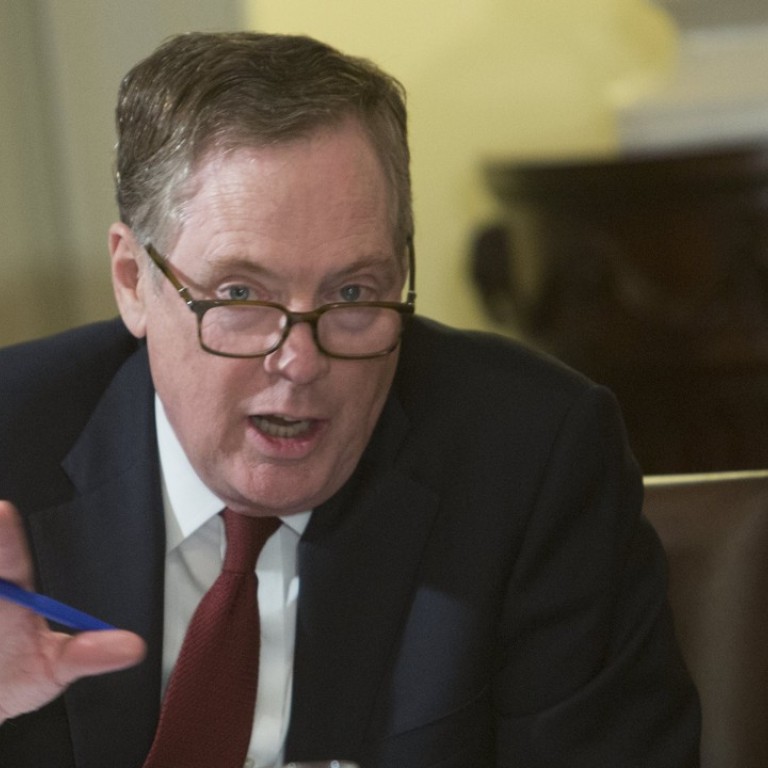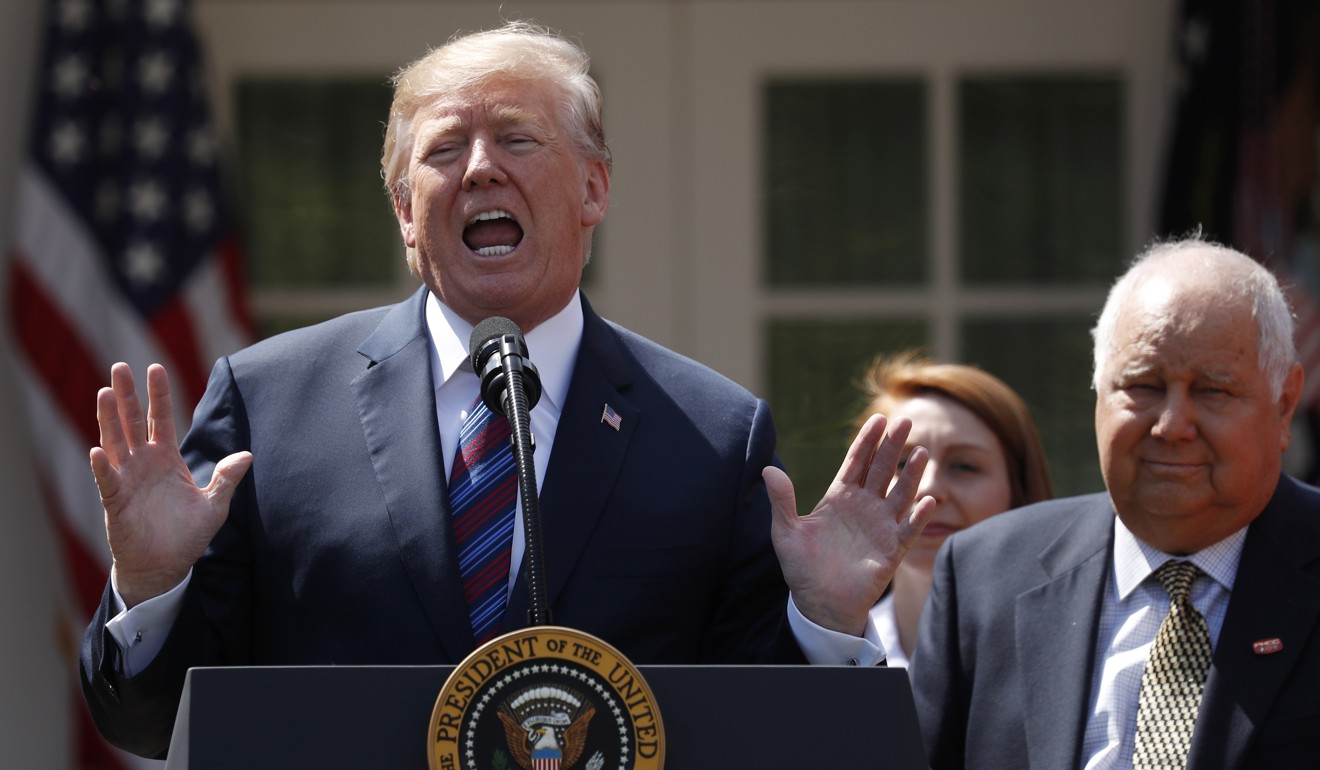
‘America First’ no more? Donald Trump looks to rejoin Trans-Pacific Partnership as he talks down China trade war fears
The Trans-Pacific Partnership would open more overseas markets for American farmers
One year after pulling the US out of the Trans-Pacific Partnership (TPP) as part of his “America First” campaign, US President Donald Trump has executed a surprise U-turn by asking officials to look into rejoining negotiations on the Pacific Rim agreement.
Trump made the request on Thursday during a meeting with lawmakers from farm states, which would benefit from US participation in the agreement, and gave the assignment to his trade representative, Robert Lighthizer, and his new chief economic adviser, Larry Kudlow.
Just as surprising, perhaps, were his positive remarks in the meeting about America’s relationship with China, which has been strained over the last week after Trump threatened to impose US$100 billion more in tariffs on Chinese products, potentially triggering a full-on trade war.
“Now [China and the US are] really negotiating and I think they’re going to treat us really fairly,” Trump said. “I think they want to.”
Senator Ben Sasse, Republican of Nebraska, who was present at the meeting, said that Trump was adamant about rejoining the TPP.
“I’m sure there are lots of particulars that they’d want to negotiate, but the president multiple times reaffirmed in general to all of us and looked right at Larry Kudlow and said, ‘Larry, go get it done,’” he said.
He added: “He multiple times reaffirmed the point that TPP might be easier to join now.”
Senator Pat Roberts, the Kansas Republican who is chairman of the Senate Agriculture, Nutrition and Forestry Committee, said he was “very impressed” that Trump had assigned Kudlow and Lighthizer “the task to see if we couldn’t take another look at TPP. And that certainly would be good news all throughout farm country.”
Midwest farmers, many of whom are strong Trump supporters, fear getting caught up in a trade war as Beijing threatens to impose tariffs on soybeans and other US crops.
However, the news drew criticisms from opponents of the trade pact, including AFL-CIO President Richard Trumka, who said on Twitter that TPP “was killed because it failed America’s workers and it should remain dead.”
“There is no conceivable way to revive it without totally betraying working people,” he said.
Trump withdrew the US from the accord during his first week in office. The pact, which was conceived as a counterweight to China’s increasing economic dominance in the region, had been negotiated under the Obama administration but never approved by Congress.
One White House officials said that while the president prefers negotiating bilateral trade deals, a multilateral deal with the TPP countries would counter Chinese competition and would be faster than negotiating one-on-one with each of the 11 other nations.
The 11 nations, representing 13 per cent of global output including Japan and Canada, finalised a revised version of the trade pact last month, renaming it the Comprehensive and Progressive Agreement for Trans-Pacific Partnership, or CPTPP.
Trump’s rejection of the deal has rattled allies and raised questions at home about whether protectionism would impede US economic growth.
In February he was open to rejoining the trade bloc during a news conference with Malcolm Turnbull, the prime minister of Australia, which is in the CPTPP.

In his remarks on Thursday, Trump also cited a speech by Chinese President Xi Jinping at the Boao Forum for Asia, saying that he interpreted it as a signal China was about to open its markets to more US goods.
“He’s going to get rid of a lot of taxes and tariffs,” Trump said of Xi.
Xi had pledged a “new phase of opening up” Tuesday in a keynote address to the Boao forum.
While the speech offered little new policy and made no mention of Trump, Xi affirmed or expanded on proposals to increase imports, lower foreign-ownership limits on manufacturing and expand protection to intellectual property - all issues central to the US president’s trade complaints.
Trump clearly regarded the remarks as conciliatory, and said again on Thursday that it was a “good speech.”


